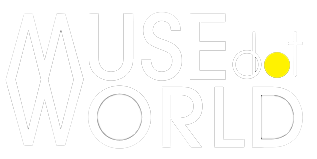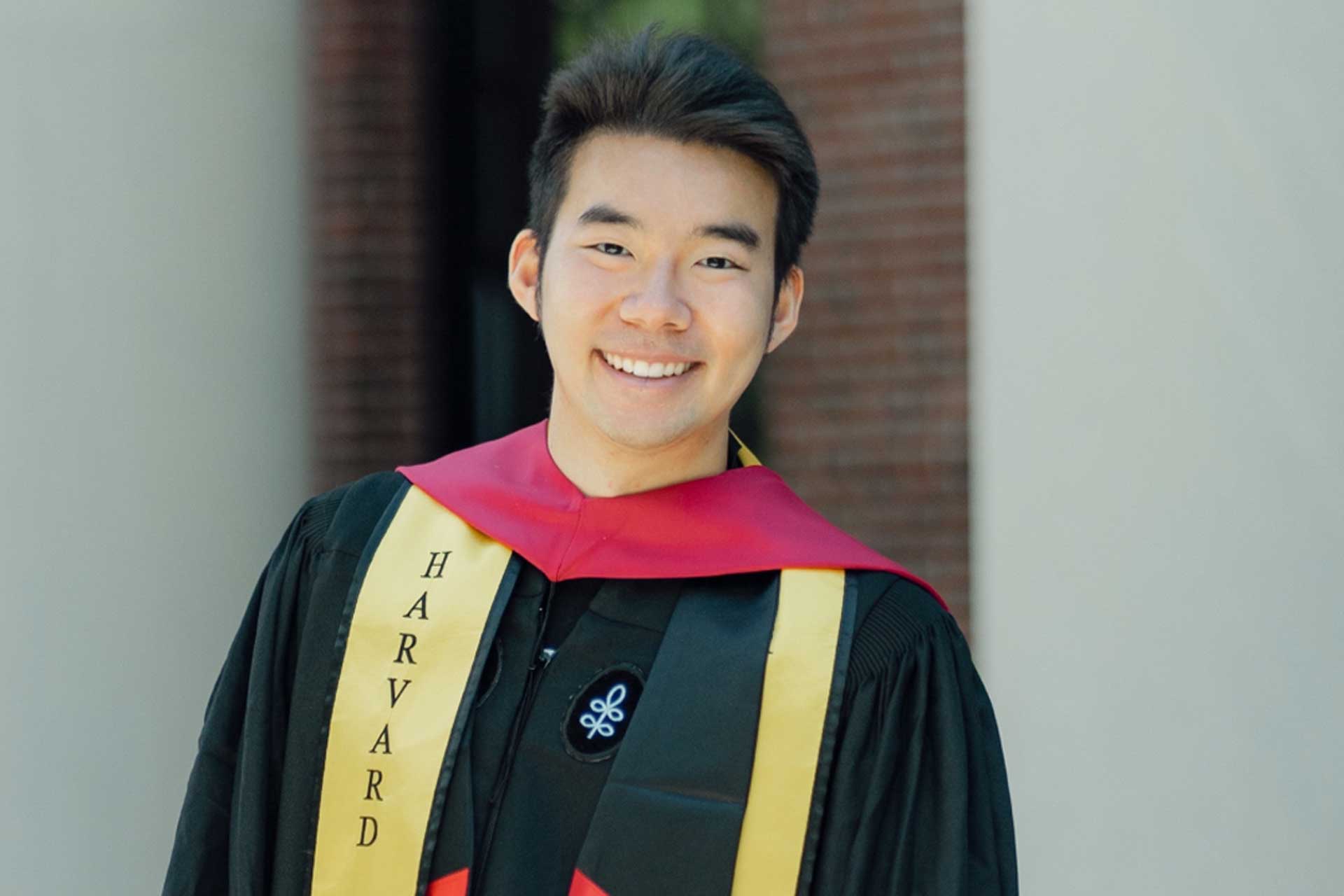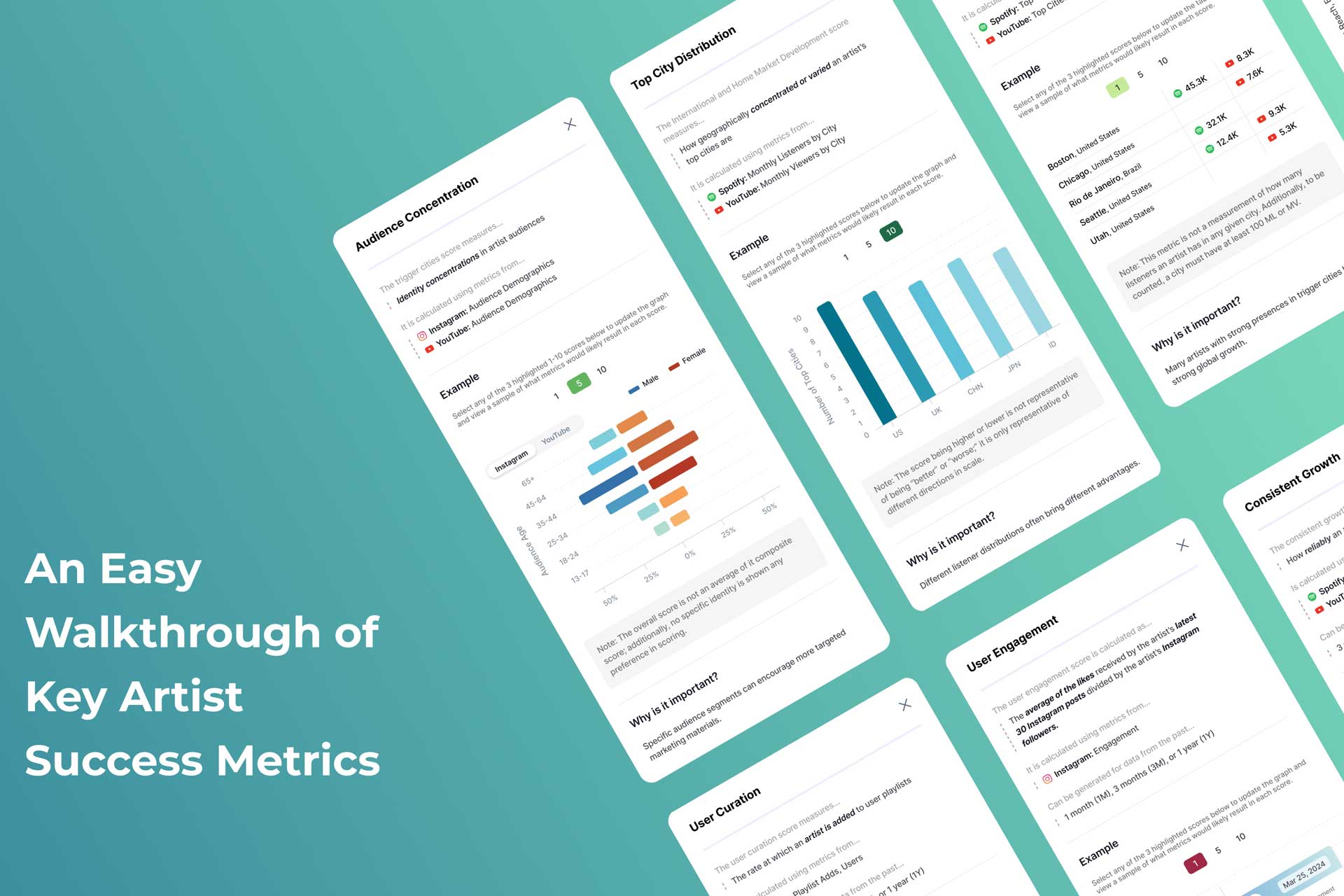Beyond Memory Land and MindFuel: Qihang Zhang on A&R in Talent Search Tool

ONLY ON NETFLIX by amc asia!
December 26, 2024
Interview with Chamath Soysa, The Founder and Creative Mind Behind Frends Art
December 26, 2024Qihang Zhang
Qihang Zhang is a product designer and entrepreneur, leading design at Chartmetric and contributing to marketing at Tesla and National Geographic. As co-founder of Memory Land and MindFuel, he creates digital experiences focused on emotional healing and resilience.
I'm Qihang Zhang and I'm a product designer and entrepreneur based in the San Francisco Bay Area. I hold a Master of Education in Learning Design, Innovation, and Technology from Harvard University and a Bachelor of Arts in Communications and History from UCLA, with an MBA from Stanford University set for completion.
I have spearheaded innovative design initiatives at Chartmetric, transforming how the music industry utilizes analytics by empowering minority artists and enhancing data-driven decision-making. My experience extends to high-impact roles at organizations like Tesla and National Geographic, where I contributed to pioneering marketing strategies and campaigns.
As a co-founder of Memory Land and MindFuel, I am dedicated to creating spaces that foster emotional healing and resilience through advanced digital experiences and trauma-informed mindfulness practices.
My path to becoming a creative was shaped by a blend of education, curiosity, and personal discovery. It began with studying Communications at UCLA, where I initially aimed for a career in the entertainment industry.
This experience opened my eyes to the power of storytelling, which became a crucial element in my creative journey. I soon realized that design was an indispensable form of storytelling, capable of conveying messages and evoking emotions in unique ways. This revelation came through hands-on experimentation, from redesigning album covers to building music data apps from scratch. I found immense joy in this creative process, particularly in how it allowed me to share stories and inspire others.
Recognizing where my passions and skills intersected, I made a deliberate decision to pivot my career towards product design, with a focus on UI and UX. To support this transition, I took the initiative to teach myself Figma, demonstrating my commitment to the field. Ultimately, my journey wasn't a straight path but an evolution, driven by my growing understanding of how design can create meaningful experiences and my genuine enthusiasm for the creative process.
This realization led me to embrace a career where I can continuously explore new ways to communicate and inspire through visual and interactive mediums.
Chartmetric is a music analytics platform that provides comprehensive data and insights for the music industry. The platform's value lies in its ability to help artists, managers, labels, and other industry professionals make data-driven decisions about marketing strategies, tour planning, and career development.
By providing real-time, actionable insights, Chartmetric enables its users to understand market trends, identify emerging artists, and optimize their promotional efforts. This data-centric approach helps level the playing field in the music industry, allowing both established and up-and-coming artists to leverage analytics for success in an increasingly digital and competitive landscape.
As the Product Design Lead at Chartmetric, I drive the enhancement of existing features and spearhead the design of innovative products that revolutionize music analytics. My role blends creativity with data visualization, allowing me to craft visually compelling and intuitive interfaces that transform complex artist and music data into clear, actionable insights.
I relish the opportunity to experiment with colors, fonts, and visual elements, making data not just accessible, but engaging for our diverse user base. Working collaboratively with cross-functional teams, I ensure our designs are both aesthetically pleasing and functionally robust. What truly excites me is the impact of my work: by creating user-centric designs, I enable our clients to make data-driven decisions that empower emerging talents and promote music of diverse genres.
My goal is to design interfaces that don't just present data, but tell stories that drive real change in the music industry. This unique position allows me to contribute to leveling the playing field for artists while staying at the forefront of design trends and technological advancements in both the tech and music sectors.
To me, creativity is the art of connecting dots in unexpected ways. It's about seeing patterns where others see chaos, and finding novel solutions to age-old problems. Creativity isn't just about making something new; it's about making something meaningful. It's the ability to take existing ideas, concepts, or materials and combine them in ways that spark innovation or evoke emotion.
In the realm of design, creativity means crafting experiences that not only look beautiful but also solve real problems for users. It's about pushing boundaries while staying grounded in purpose. Creativity is both a skill and a mindset – it requires technical knowledge and expertise, but also the courage to experiment, fail, and try again.
Ultimately, creativity is about transformation: transforming blank canvases into works of art, complex data into intuitive interfaces, and everyday experiences into moments of delight and discovery.
To me, a creative idea or design transcends mere novelty or aesthetics; it embodies innovation, relevance, and emotional resonance. A truly creative design not only solves a problem in a unique way but also connects with users on an emotional level, enhancing their experience and engagement. It should push boundaries, challenging conventional norms and encouraging us to rethink our interactions with the world around us.
Moreover, creative design is about inclusivity, ensuring that solutions are accessible to a diverse audience, reflecting a broad spectrum of human experiences and needs. Ultimately, the creativity in a design is evident in its ability to inspire, provoke thought, and bring about meaningful change.
My design process begins with thorough research to deeply understand the user's needs and the problem at hand. This informs the ideation phase, where diverse, innovative solutions are brainstormed. I then move into prototyping, using iterative design to refine ideas based on feedback.
Finally, I meticulously fine-tune every detail in the implementation phase to ensure the design is not only functional but also aesthetically compelling and user-friendly. This structured yet flexible approach allows for creativity while ensuring the final product effectively addresses the user requirements.
In my role, I champion the agile development methodology, a dynamic and collaborative approach that thrives on the synergy of cross-functional teams. Together, we navigate through iterative cycles, each step fine-tuned through constant feedback and shared insights.
This ongoing process of improvement not only accelerates our adaptability to change but also fosters a culture of innovation and collective problem-solving, ensuring that each project not only meets but exceeds our expectations.
My favorite part of the creative process is the ideation phase. This is the stage where imagination and strategy converge, allowing for the exploration of diverse ideas and the freedom to think outside the box. What excites me most about ideation is the potential to redefine problems and discover innovative solutions that are not only effective but also inspiring.
This phase is crucial because it sets the foundation for all subsequent design decisions and is often where the most transformative concepts are born. The energy and collaborative spirit during ideation fuel my passion for design, driving me to create products that truly resonate with users and make a meaningful impact.
My creative style is best described as human-centered and detail-oriented. I focus intensely on the end-user experience, ensuring that each design solution is accessible, intuitive, and enriches the user's interaction with the product. I blend this user-focused approach with a strong aesthetic sensibility that emphasizes clean lines, coherent color schemes, and thoughtful typography.
This combination ensures that my designs are not only functional but also visually appealing. Additionally, I integrate elements of innovation by experimenting with new layouts and technologies to keep my work fresh and forward-thinking. This style allows me to create designs that are both impactful and enduring.
My cultural heritage has been a vital influence on my creative process. Born in China, I was surrounded by an environment rich in history, culture, and architecture, which deeply shaped my design sensibilities. My fascination with design began with my first exposure to the intricate beauty of Gothic architecture and the serene balance of Chinese gardens from the Ming and Qing Dynasties.
These experiences instilled in me an appreciation for the humanity embedded in architectural forms, influencing how I integrate cultural and historical elements into my work. This blend of Eastern and Western influences has not only enriched my aesthetic perspective but also continually informs my approach to creating designs that are thoughtful, inclusive, and resonate on a human level.
Winning the 2024 MUSE Creative Awards is a tremendous honor for both myself and our team at Chartmetric. This recognition is not only a validation of our dedication to innovative design but also a testament to the collaborative spirit that drives our company. It underscores our commitment to pushing the boundaries of what is possible in design and analytics within the music industry.
For us, this award signifies that our efforts to integrate creativity with utility are resonating within the broader creative community. It motivates us to continue our work, striving for even greater achievements and maintaining our lead in the innovation of music industry analytics.
The project we entered into the 2024 MUSE Creative Awards centers on digitalizing and streamlining the A&R process, a cornerstone of talent identification and promotion in the music industry.
Recognizing the increasing digitalization of the industry, we aimed to make this crucial process more accessible to a broader range of stakeholders. As a designer, I focused on overcoming significant challenges in data visualization and information hierarchy. I consistently prioritized the end-users, striving to ensure that the data and insights we presented were not only accessible but also directly valuable and actionable in meeting their objectives.
This project represents a synthesis of technical skill and user-centered design, tailored specifically to enhance and streamline the A&R operations.
The biggest challenge with this project was ensuring that the advanced data analytics features we developed were both powerful enough for industry experts and accessible enough for newcomers to the music industry. Balancing these needs required innovative approaches in data visualization and user interface design to simplify complex data without losing valuable insights.
Additionally, fostering an inclusive platform that supports minority artists added layers of complexity, as it was crucial to address diverse needs and perspectives within the design process. Overcoming these challenges involved extensive user research, iterative testing, and ongoing collaboration with stakeholders to refine our features and ensure they met a wide range of user requirements effectively.
My top three favorite things about the design industry are its relentless pursuit of innovation, the profound impact on user experience, and the diversity of thought it fosters. Firstly, the design industry is always at the forefront of innovation, constantly pushing the boundaries of what is possible and transforming ideas into tangible solutions that enhance everyday life.
Secondly, the focus on user experience is paramount; good design profoundly influences how people interact with products and services, making it both functionally and emotionally significant.
Lastly, the industry’s commitment to diversity—be it in design thinking, problem-solving, or team composition—enriches the creative process and leads to more inclusive and successful outcomes.
China's creative industry is uniquely characterized by its pioneering development of super apps—comprehensive platforms that integrate a wide array of services, from messaging and social media to payments and shopping. This innovation reflects a broader cultural and technological propensity for integration and efficiency that permeates the creative landscape in China.
By consolidating multiple functions into single platforms, these super apps not only streamline user experience but also foster a highly interactive and interconnected digital ecosystem. As a designer, there is much to learn from this approach, particularly in terms of creating multifaceted yet user-friendly designs that cater to a wide range of needs and preferences in a cohesive manner.
The ability to merge diverse services and functionalities seamlessly is a powerful lesson in efficiency and user-centric design, offering valuable insights for enhancing the utility and aesthetic appeal of digital products globally.
To aspiring MUSE Creative Awards submitters and students entering the design industry: take the plunge before self-doubt holds you back. Many of us, myself included, have grappled with imposter syndrome, but remember that design is inherently subjective.
There's rarely a direct comparison in real-world scenarios, so focus on your unique perspective. Every designer has their own strengths and areas for growth – your individual experiences make your work valuable. When entering the MUSE Awards, showcase your best work with courage and confidence. Believe in your creativity, but remain mindful throughout the process. Seek feedback from mentors or peers to refine your submissions.
Regardless of the outcome, view this as a learning opportunity and a chance to join a community of creative professionals. Remember, by participating, you're already taking a significant step in your design career. The MUSE Creative Awards are not just about winning, but about challenging yourself and gaining exposure. So, give it your best shot – your unique vision deserves to be seen.
For those looking to enhance their skills in the creative industry, I believe the most valuable resource is right at our fingertips: the apps we use daily. By closely observing how these apps create seamless, user-centered interfaces and interactions, we can learn to design intuitive experiences that users barely notice.
However, this shouldn't be your only resource. Supplement this observational learning with online courses on platforms like Coursera or Skillshare, follow design blogs and podcasts, and familiarize yourself with industry-standard tools like Figma or Sketch.
Engage with the design community on platforms like Dribbble or Behance, participate in design challenges, and apply your skills to personal or volunteer projects. Read classic design books, attend conferences when possible, and always keep an eye on industry trends and competitors.
Remember, the key to improvement in the creative field is not just consuming information, but actively applying what you learn and cultivating a mindset of continuous growth and adaptability.
Qihang Zhang
Qihang Zhang is a product designer and entrepreneur, leading design at Chartmetric and contributing to marketing at Tesla and National Geographic. As co-founder of Memory Land and MindFuel, he creates digital experiences focused on emotional healing and resilience.
Explore the journey of Shanshan Yuan, a Gold Winner of the 2024 MUSE Creative Awards. She is a UX/UI designer at REEKON tools where she enhances digital tools for construction professionals and her work showcases a passion for integrating advanced technologies like AR and VR.


